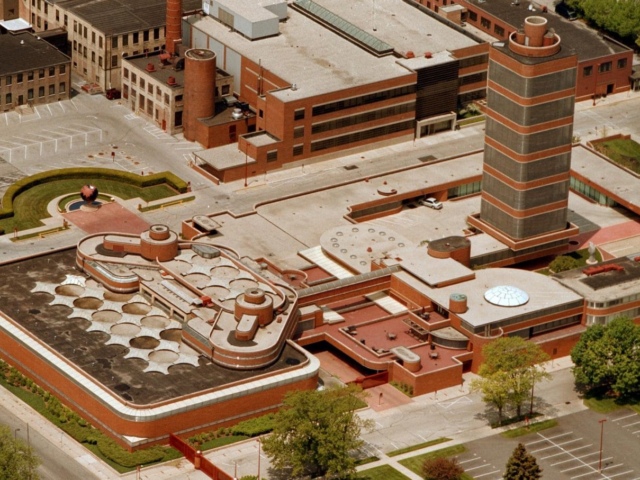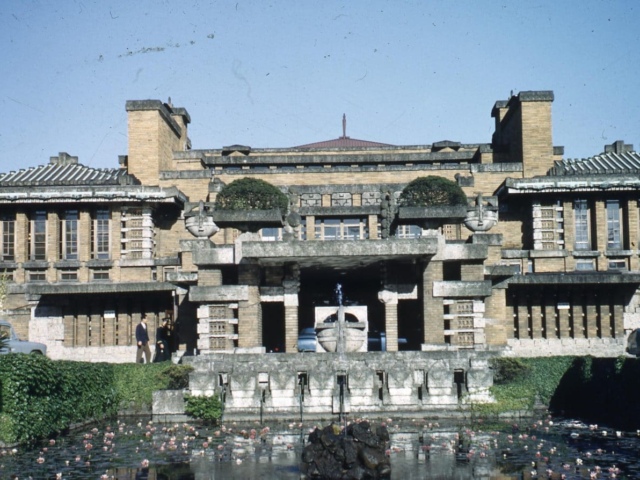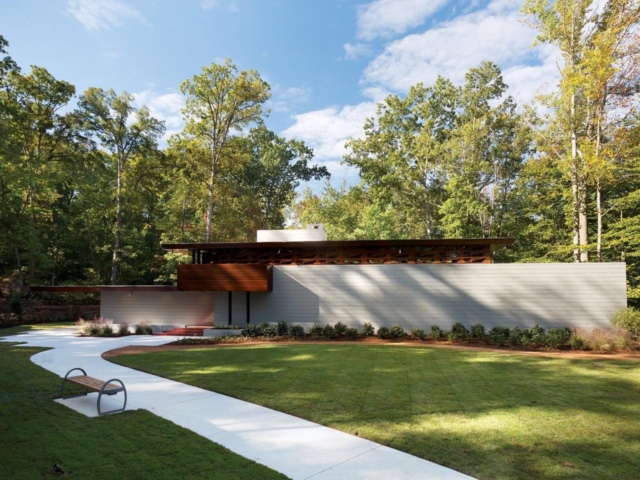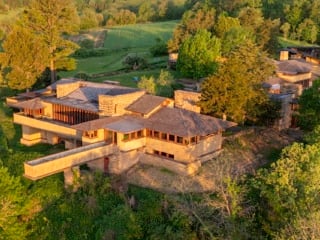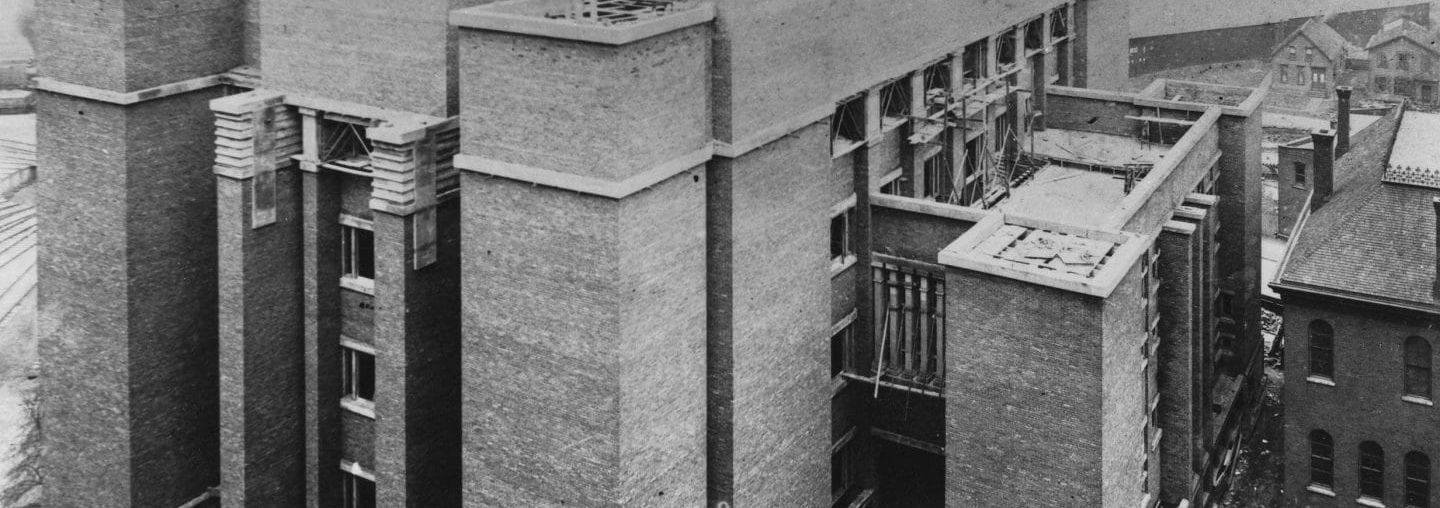
Larkin Company Administration Building
A five-story red brick ode to productivity, Wright’s first major public work was widely heralded in Europe.
At the heart of its cream brick interior, a 76-foot tall skylit courtyard ringed with inscriptions extolling the virtue of labor, provided an almost ecclesiastical light from above (a design element he would revisit in the Unity Temple and the S.C. Johnson Wax Administration Building). Characteristically, Wright designed every aspect of the interior, incorporating many technical innovations such as glass doors, air conditioning, radiant heat, built-in desk furniture and suspended toilet bowls. Despite its demolition in 1950, the Larkin Building remains a modern icon of twentieth century building.
Built to serve as the administrative headquarters for the Larkin Company’s burgeoning mail-order soap business, the building was necessarily sited amidst a tangle of railroad lines. To protect its workers from the smoke-laden environment, Wright’s six-story building turned inward, with a Roman-style atrium and surrounding inward-facing balconies creating a bright and airy interior. In his Autobiography Wright would later describe the Larkin building as “a genuine expression of power directly applied to purpose, in the same sense that the ocean liner, the plane or the car is so.” Though the Larkin building is now celebrated for its avant-garde vision, Wright’s defiant departure from the popular Beaux-Arts style made it appear “a monster of awkwardness” to many of his contemporaries, such as the hard-hitting Architectural Record critic, Russell Sturgis. Despite being demolished in 1950, the Larkin Building remains a modern icon of twentieth century building.

